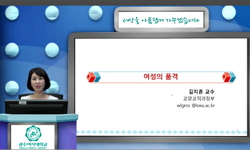Yochang-gagok or a selection of the sijos performed by female singers was formed on the basis of the popular culture of Seoul in the 19th century. In this context, it has often been characterized by popular sentimentalism although it bears other liter...
http://chineseinput.net/에서 pinyin(병음)방식으로 중국어를 변환할 수 있습니다.
변환된 중국어를 복사하여 사용하시면 됩니다.
- 中文 을 입력하시려면 zhongwen을 입력하시고 space를누르시면됩니다.
- 北京 을 입력하시려면 beijing을 입력하시고 space를 누르시면 됩니다.
https://www.riss.kr/link?id=A82448503
- 저자
- 발행기관
- 학술지명
- 권호사항
-
발행연도
2010
-
작성언어
-
- 주제어
-
KDC
800
-
등재정보
KCI등재
-
자료형태
학술저널
- 발행기관 URL
-
수록면
181-208(28쪽)
- DOI식별코드
- 제공처
- 소장기관
-
0
상세조회 -
0
다운로드
부가정보
다국어 초록 (Multilingual Abstract)
Yochang-gagok or a selection of the sijos performed by female singers was formed on the basis of the popular culture of Seoul in the 19th century. In this context, it has often been characterized by popular sentimentalism although it bears other literary characteristics than that. Its representations of love are specific and creative in the aspects as follows: the innovation of the traditional love poetry, the expression of self-consciousness by means of Korean vernacular, and the verbalization of rapture and passion through bold metaphors. These features can be summarized in a word, seriousness, which is opposite to the lightness of the namchang-gagok or a selection of the sijos performed by male singers: it represented love only sentimentally or comically. The seriousness embedded in the yochang-gagok indicates that the yochang-gagok was not only the product of male customers` taste, but also the work that reflected the reality and desire of the female singers, kisaengs, who yearned to surpass class boundaries through ideal love`s possibility. In this respect, the yochang-gagok was not the reproduction of feminine stereotypes, but the female discourse that expressed real women`s experiences and feelings.
동일학술지(권/호) 다른 논문
-
18~19세기, 시적 공간으로서의 한양에 대한 일고찰 -교류와 통합, 공존에 주목하여-
- 한국시가학회
- 김은희 ( Eun Hee Kim )
- 2010
- KCI등재
-
연시조의 현대적 계승과 종장 운용의 특성 -이병기의 연시조를 중심으로-
- 한국시가학회
- 권정은 ( Jung Eun Kwon )
- 2010
- KCI등재
-
- 한국시가학회
- 임재욱 ( Jae Wook Yim )
- 2010
- KCI등재
-
고전기사와 일상성(日常性)의 문제 ; 기조발표 : 공시적 관점에서 본 고전시가와 일상성의 문제
- 한국시가학회
- 양태순 ( Tae Soon Yang )
- 2010
- KCI등재





 KCI
KCI KISS
KISS







